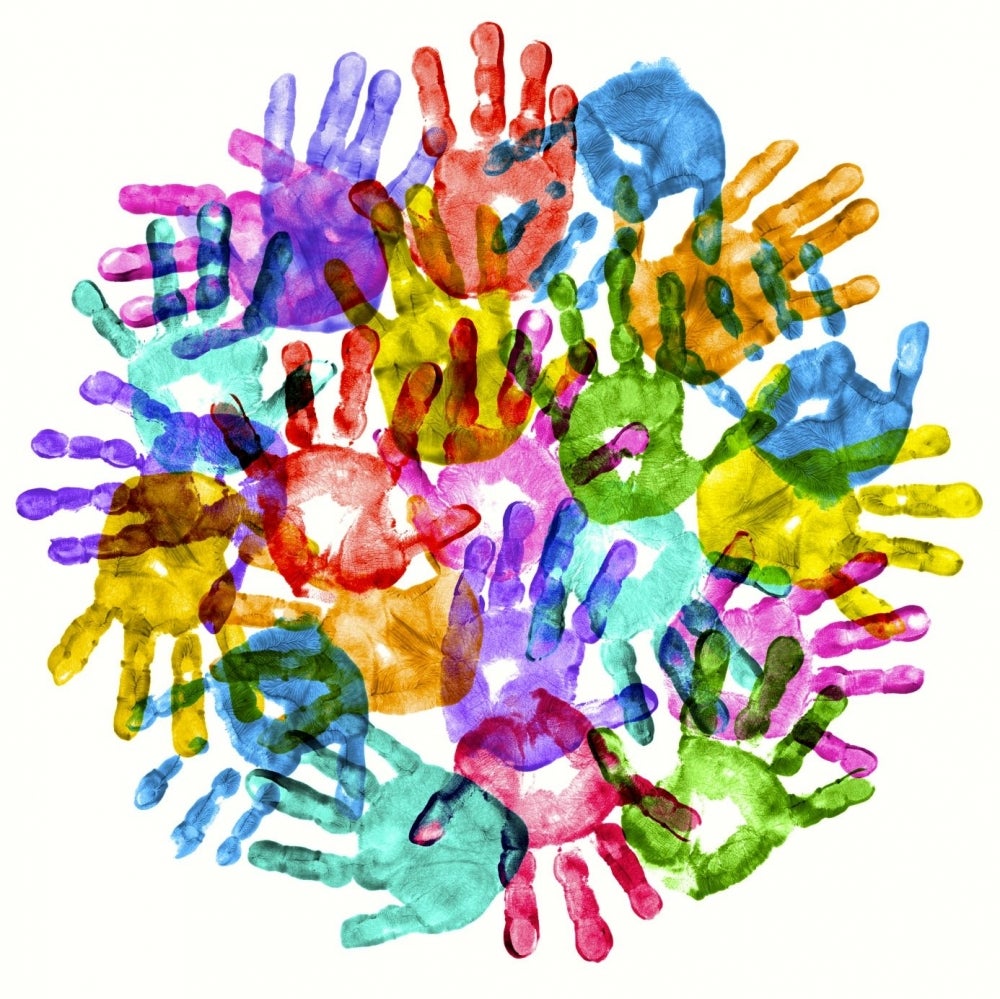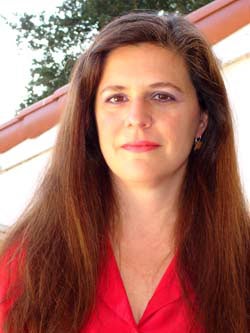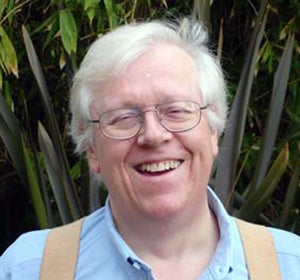
The Content of Our Cooperation, Not the Color of Our Skin



It’s widely acknowledged that a common threat unites people. Individuals who were previously separated by social class, race or ethnicity come together, forming new cooperative alliances to defeat a common enemy. But does it take an external threat — an attack like Pearl Harbor or 9/11 — to make these social divisions melt away?
A study by behavioral scientists at UC Santa Barbara demonstrates that peaceful cooperation has the same effect as intergroup conflict in erasing social boundaries connected to race. Their findings appear today in the journal PLOS ONE.
“Evolution has equipped the mind with a cognitive system that is specialized for detecting alliances in the social world,” said Leda Cosmides, professor of psychology at UC Santa Barbara and co-director of the campus’s Center for Evolutionary Psychology. “This alliance detection system spontaneously picks up cues about who’s cooperating with whom, and uses them to implicitly assign people to social categories.” The paper’s lead author, David Pietraszewski, collaborated with Cosmides and John Tooby, a professor of anthropology at UCSB and also co-director of the center. Pietraszewski was a graduate student at UCSB when the research was done, and is now a postdoctoral scholar at Yale University.
Behavioral scientists have long known that people commonly categorize others by race and ethnicity. Earlier work at the center had found that intergroup conflict reduced social categorization by race. “So the first question we asked is whether social antagonism is necessary to trigger the categorization of people by alliance — do we cognitively link A and B into an alliance category only because they are jointly in conflict with C and D?” Pietraszewski said. The short answer: It isn’t.
The researchers used an experimental setup called “Who Said What?” to see how their subjects were spontaneously categorizing people. “When people are trying to recall who said what in a conversation, the errors they make show us the hidden ways they are categorizing the speakers,” Pietraszewski said.
In these experiments, subjects observed a scenario in which eight people conversed with one another — in this case volunteers from two organizations that help people, Habitat for Humanity and Partners in Health. All the volunteers were wearing identical gray shirts, so there were no visual features distinguishing members of the two groups. In some conditions, each charity group had two black and two white members of the same sex, so race did not correlate with group membership. In others, each had two men and two women of the same race, so gender did not predict group membership. Subjects watched as the eight volunteers chatted pleasantly about how each group cooperates to help others.
This conversation contained clues about who was allied with whom — that is, about which individuals volunteer for Habitat for Humanity versus Partners in Health. After watching this scenario for a few minutes, the volunteers’ faces appeared on a screen and statements from their conversation came up at random. Subjects were asked to indicate “who said what?” by clicking on the face of the person who had made each statement.
“If you get it right, that doesn’t tell us anything,” Pietraszewski explained. “But people make a lot of errors, and they are more likely to confuse individuals they have assigned to the same mental category. Their mistakes will not be random. For example, subjects who implicitly categorized the volunteers by their gender will be more likely to misattribute a statement made by a woman to another woman than to a man, and vice versa. If these subjects also categorized the volunteers by their alliances, they will be more likely to misattribute a statement made by one member of Habitat for Humanity to another Habitat member than to a member of Partners in Health.” By tracking these error patterns, the researchers were able to measure how strongly subjects categorized the volunteers by their coalitional alliances, race and sex.
“We found that subjects spontaneously detected who was allied with whom, categorizing the volunteers by their charity group membership,” Pietraszewski said. “There was no need for intergroup conflict. Peaceful cooperation triggered alliance detection, whether the two coalitions were mixed-race or mixed-sex.”
The second question the researchers asked was whether racial categorization occurs because our minds treat race as if it were a clue to people’s alliances. “Do categories such as 'black' and 'white' arise in our minds because we cannot help but see differences in skin color? Or is it because the alliance system has detected that these differences in skin color are correlated with patterns of cooperation and conflict in our society?” Tooby asked. “If racial categories are creatures of the alliance system — if they are used to predict who is allied with whom when there is no other information available — then it should be easy to decrease racial categorization. Race should fade in relevance when it is clear that other social dimensions, and not race, are currently organizing people’s behavior.”
To test this prediction, the researchers compared racial categorization when coalitions were absent versus present. “In some conditions, speakers belonged to two cooperative coalitions — the charity groups — and they were chatting about their work. In other conditions, the same speakers made similar remarks, but they were not members of two different coalitions. We measured racial categorization in both sets of conditions. This let us see whether evidence of peaceful cooperation across racial boundaries reduced categorization by race,” Pietraszewski explained.
It did. “When race did not predict who was allied with whom, but participation in these cooperative charity groups did, there was a striking decrease in the extent to which our subjects categorized people by their race,” Pietraszewski continued. “When all the volunteers in the scenario were men, racial categorization was cut almost in half. When all the volunteers were women, racial categorization disappeared. The alliance system responded quickly to new information. Our subjects were exposed to a world in which race did not predict coalitional alliances for only a few minutes, but this was enough to reduce — and sometimes eliminate — the nonconscious tendency to categorize by race.”
To rule out alternative explanations for the decrease in racial categorization, the researchers also measured categorization by gender when coalitions were present versus absent. “Gender was a good comparison category,” Cosmides said. “Like differences in skin color, differences in sex are visible on the face, and both are categorized strongly under many conditions."
But race and sex are different in an important respect, the researchers said. Coalitional alliances change all the time; if the mind treats race as a clue for predicting people’s alliances, then showing black and white people cooperating with one another should reduce the use of this clue — it should reduce racial categorization. But gender is important in all human societies, and in all primate species; it organizes social behavior in many different situations. Evolution should have equipped our minds with a cognitive system that spontaneously categorizes people by their gender, because it was useful for predicting and interpreting behavior during our evolutionary history. If this is correct, then categorization by sex should remain high, even when people see men and women cooperating with one another. The alliance cues that reduce racial categorization should have no effect on gender categorization.
As predicted, the researchers found that subjects strongly categorized the volunteers by their gender no matter what — whether charity groups were present or absent, whether the individuals were dressed identically or wore different colored shirts. “The alliance detection system regulated categorization by coalition and race, but not sex,” Pietraszewski said.
“This study tests the model that the mind cares about physical features only to the extent that they suggest social relationships,” explained Pietraszewski. “It shows that the reason the mind attends to race at all is to keep track of people’s affiliations. When race proves not to be a factor, the alliance detection system attends to it only minimally, if at all.”
“The method we used is entirely unobtrusive,” said Tooby. “People don’t know what you’re measuring, and they couldn’t control it even if they did. It shows the principles by which you’re categorizing people implicitly. In and of itself, implicitly assigning people to racial categories is not racism. But if you combine the tendency to categorize by race with a negative evaluation, that is racism.”
According to Tooby, when race does not predict who’s on what side of an issue or who’s supporting whom, the mind discards it as an element for identifying alliances. “Traditionally, the general impression people had was that when you learn to be racist, it gets deeply inscribed and sneaks out in subtle ways and it’s slow to change,” he explained. “One of the striking implications of this research is that the tendency to categorize by race is easy to eliminate.
“The common-sense interpretation of why you see racial categories in the world is because different kinds of people exist, and they look different from each other. Therefore, just like you pick up differences between pears and peaches, you pick up different races in the world,” continued Tooby. “But at the genetic level the differences are really hard to see. It’s just not the case that people of one race have a large series of genes that people from another race lack; you just don’t see that.”
The question then becomes why racial differences are so visually salient to people. “We see race in the world because patterns of alliance and cooperation have trained us to sort people into categories that way,” he said. “And this training requires that our visual systems pick up tiny differences and amplify them until what we see matches the alliance structure of our social world. Young children are often surprised when adults describe players on their favorite team as being of a different race. They don’t see it.”
“This research suggests that our minds retrieve race because it predicts alliances in our social world,” said Cosmides. “When other cues predict cooperative alliances better, the mind reduces its reliance on racial categories. That’s why we refer to the content of your cooperation, not the color of your skin.”
For years, she added, social scientists have tried unsuccessfully to identify social situations that decrease the extent to which people categorize others by race. “One of the reasons people had assumed it was so difficult is because it’s supported by these perceptual differences,” she said. “But we also show that when you have purely perceptual categories — like wearing red shirts versus yellow shirts — and when shirt color doesn’t mean anything about coalitions or social differences, people barely pick it up, or they don’t pick it up at all. You can’t just say people categorize others by skin color because their visual system can’t help it.”
If categorizing individuals by race is a reversible product of a cognitive system specialized for detecting alliance categories, changing behavior might have more powerful effects than changing minds, the researchers said. “Many people assume you need to change how people think about racial issues to eliminate racism,” Cosmides explained. “This research suggests that if cooperation across racial lines continues to increase in our society, our tendency to think about people in racial terms will fall away. Cooperation should change how people think.”



